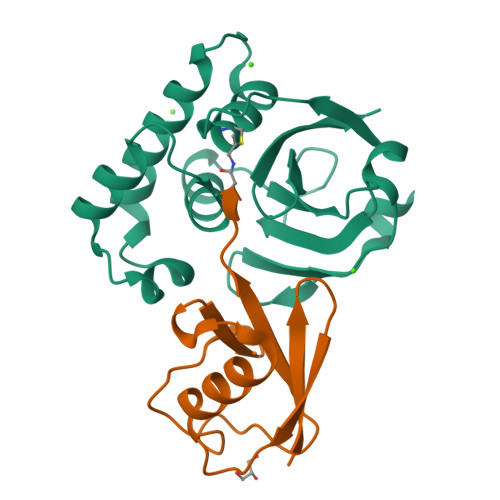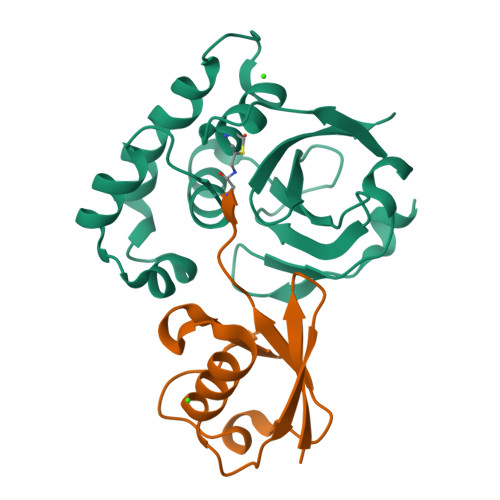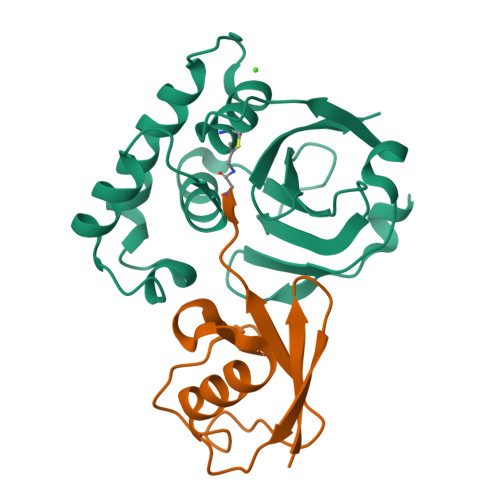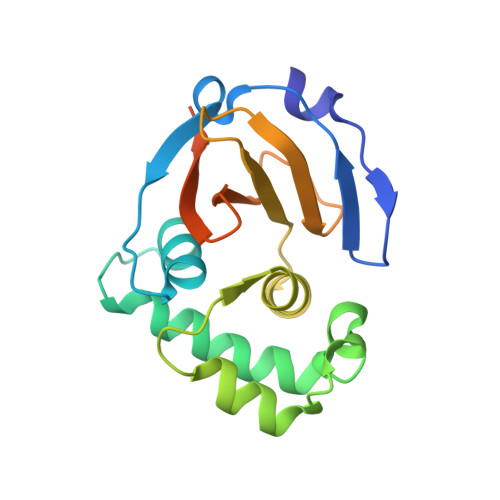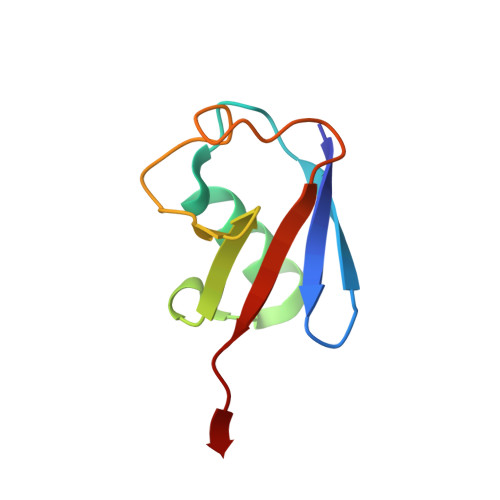Flipping the substrate preference of Hazara virus ovarian tumour domain protease through structure-based mutagenesis.
Dzimianski, J.V., Mace, S.L., Williams, I.L., Freitas, B.T., Pegan, S.D.(2020) Acta Crystallogr D Struct Biol 76: 1114-1123
- PubMed: 33135682
- DOI: https://doi.org/10.1107/S2059798320012875
- Primary Citation of Related Structures:
7JMS - PubMed Abstract:
Nairoviruses are arthropod-borne viruses with a nearly global geographical distribution. Several are known causative agents of human disease, including Crimean-Congo hemorrhagic fever virus (CCHFV), which has a case fatality rate that can exceed 30%. Nairoviruses encode an ovarian tumour domain protease (OTU) that can suppress the innate immune response by reversing post-translational modifications by ubiquitin (Ub) and/or interferon-stimulated gene product 15 (ISG15). As a result, the OTU has been identified as a potential target for the development of CCHFV therapeutics. Despite sharing the same general fold, nairoviral OTUs show structural and enzymatic diversity. The CCHFV OTU, for example, possesses activity towards both Ub and ISG15, while the Hazara virus (HAZV) OTU interacts exclusively with Ub. Virology studies focused on the OTU have mostly been restricted to CCHFV, which requires BSL-4 containment facilities. Although HAZV has been proposed as a BSL-2 alternative, differences in the engagement of substrates by CCHFV and HAZV OTUs may present complicating factors when trying to model one using the other. To understand the molecular underpinnings of the differences in activity, a 2.78 Å resolution crystal structure of HAZV OTU bound to Ub was solved. Using structure-guided site-directed mutagenesis, HAZV OTUs were engineered with altered or eliminated deubiquitinase activity, including one with an exclusive activity for ISG15. Additionally, analysis of the structure yielded insights into the difference in inhibition observed between CCHFV and HAZV OTUs with a Ub-based inhibitor. These new insights present opportunities to utilize HAZV as a model system to better understand the role of the OTU in the context of infection.
Organizational Affiliation:
Pharmaceutical and Biomedical Sciences, University of Georgia, 240 West Green Street, Athens, GA 30602, USA.









